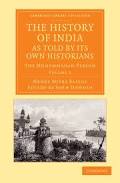Henry Miers Elliot
Henry Miers Elliot is author of book - The History of India, as Told by Its Own Historians
Sir Henry Miers Elliot on Jat History

Sir Henry Miers Elliot (1808-1853)[1] wrote: "These ignorant tribes (Jats) pointing to the remote Ghazni (Afghanistan) as their original seat, the very spot we know to have been occupied by the Yuechi, or, as Klaproth says, more correctly, Yuti, in the first centuries of our era, after the Sakas (a Scythian tribe) were repelled back from the frontiers of India, and left the country between India and Persia open for their occupation. The Jat tribes not doubt emigrated, no at all once, but at different times, and it is probable that those in the North-West are among the latest importations."[2]
Sir H.M. Elliot [3] writes the word "Massa" means "great" in the Pehlevi language of Persia or Central Asia. Sir John Marshall [20] (formerly Director-General of Archaeology in India writes "The eclipse of Greek rule at Taxila (presently in Pakistan) was brought about by an invasion of nomad tribes from the interior of Asia. Known to the western world under the comprehensive name of Scythians, to the Indians as Saka, and to the Chinese as Sai or Sai-wang, these invaders came principally from the three great tribes of Massagetae, Sacaraucae, and Dahae, whose home at the beginning of the second century BC was in the country between the Caspian Sea and the Jaxartes River". [4]
External links
References
- ↑ Sir H. M. Elliot, Encyclopaedia of Caste, Customs, Rites and Superstitions of the Races of Northern India, Vol. 1, Reprinted by Sumit Publications, Delhi, 1985, first published in 1870, pp. 133-134.
- ↑ Prof. B.S. Dhillon, History and study of the Jats/Chapter 1,p.10
- ↑ Elliot, H.M. (Sir), Encyclopaedia of Caste, Customs, Rites and Superstitions of the Races of Northern India, Vol. 1, Reprinted by Sumit Publications, Delhi, India, 1985, first published in 1870, pp. 134.
- ↑ Prof. B.S. Dhillon, History and study of the Jats/Chapter 1,p.8
Back to Resources
Back to Jat Historians

